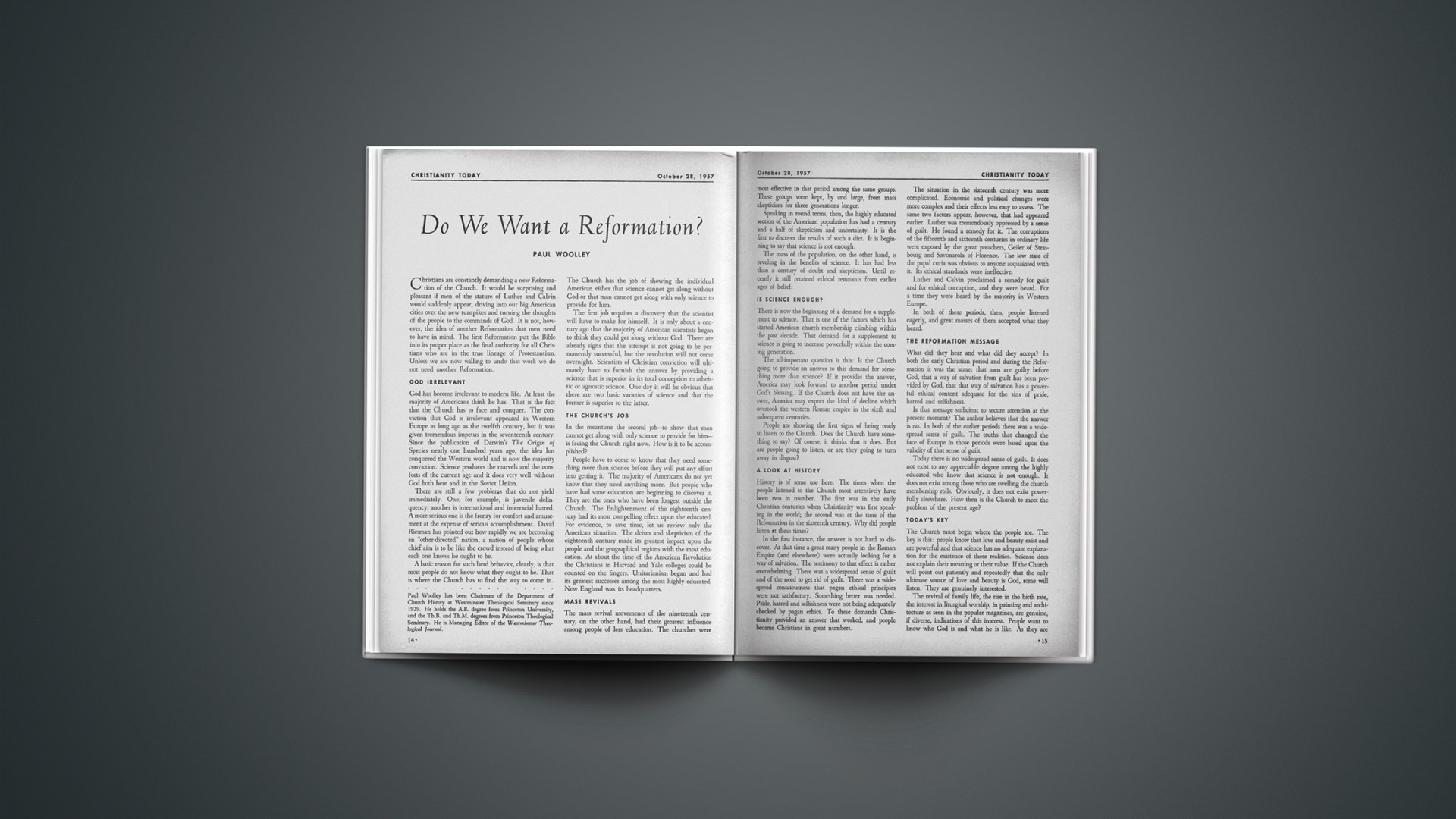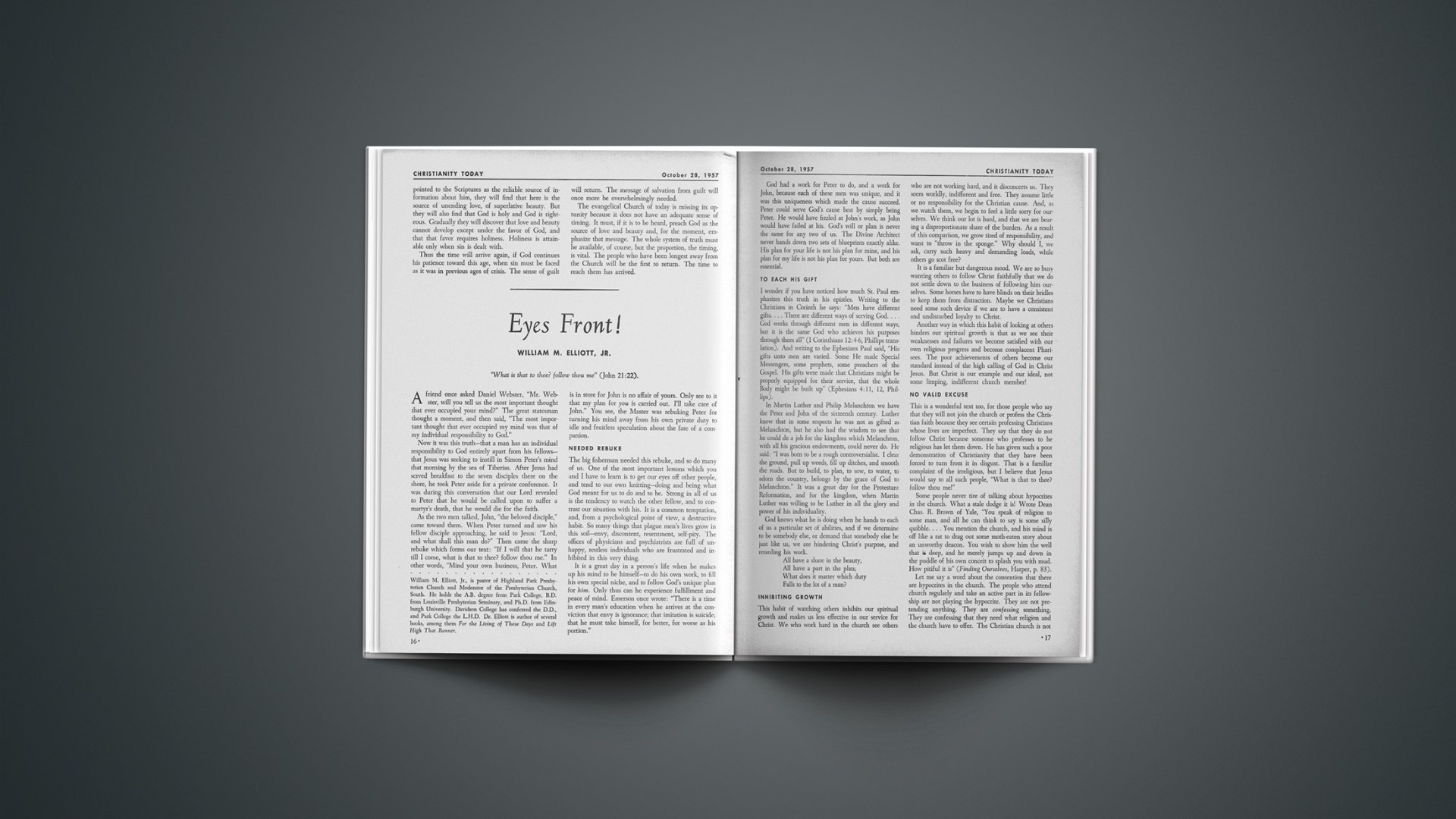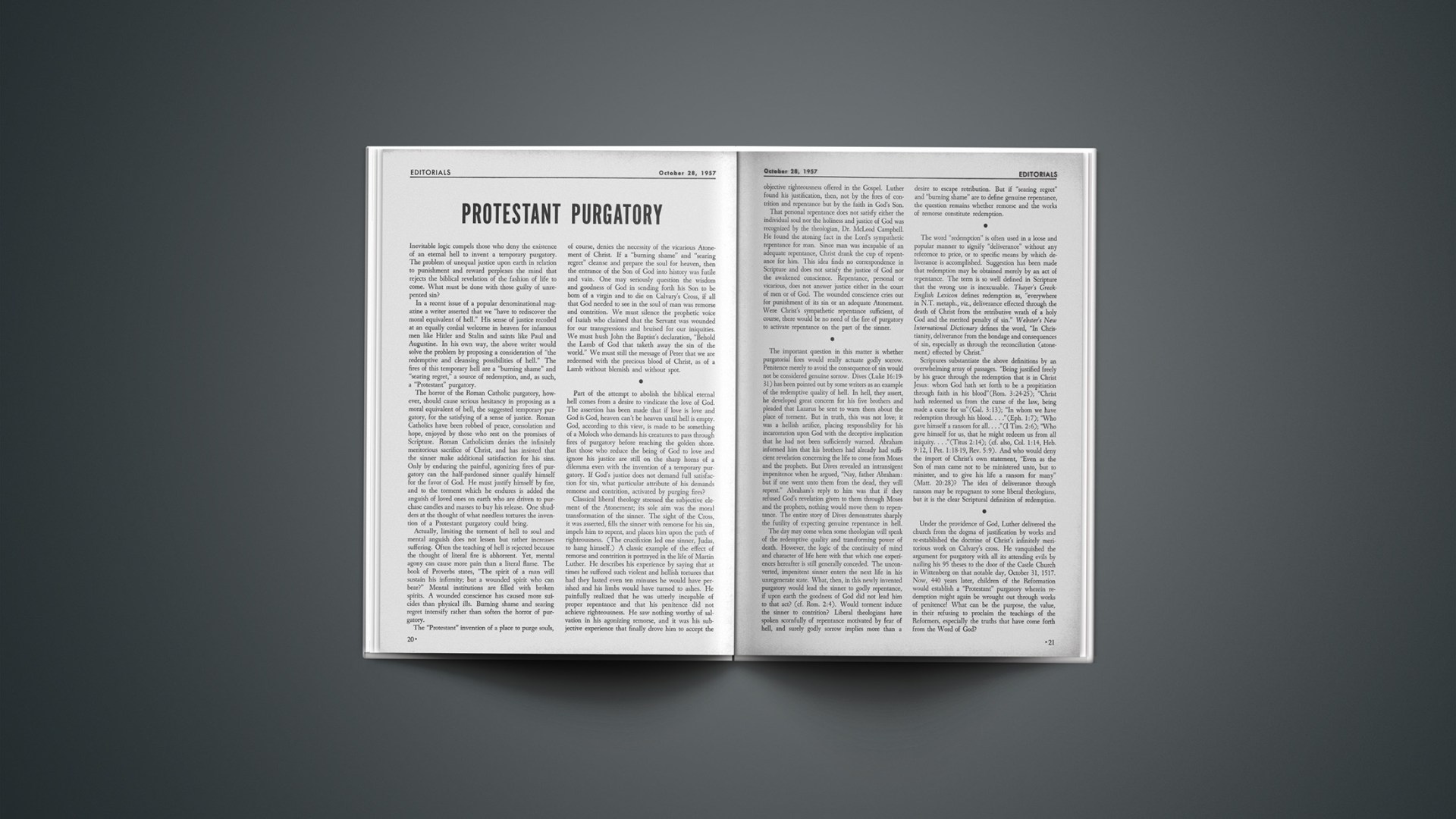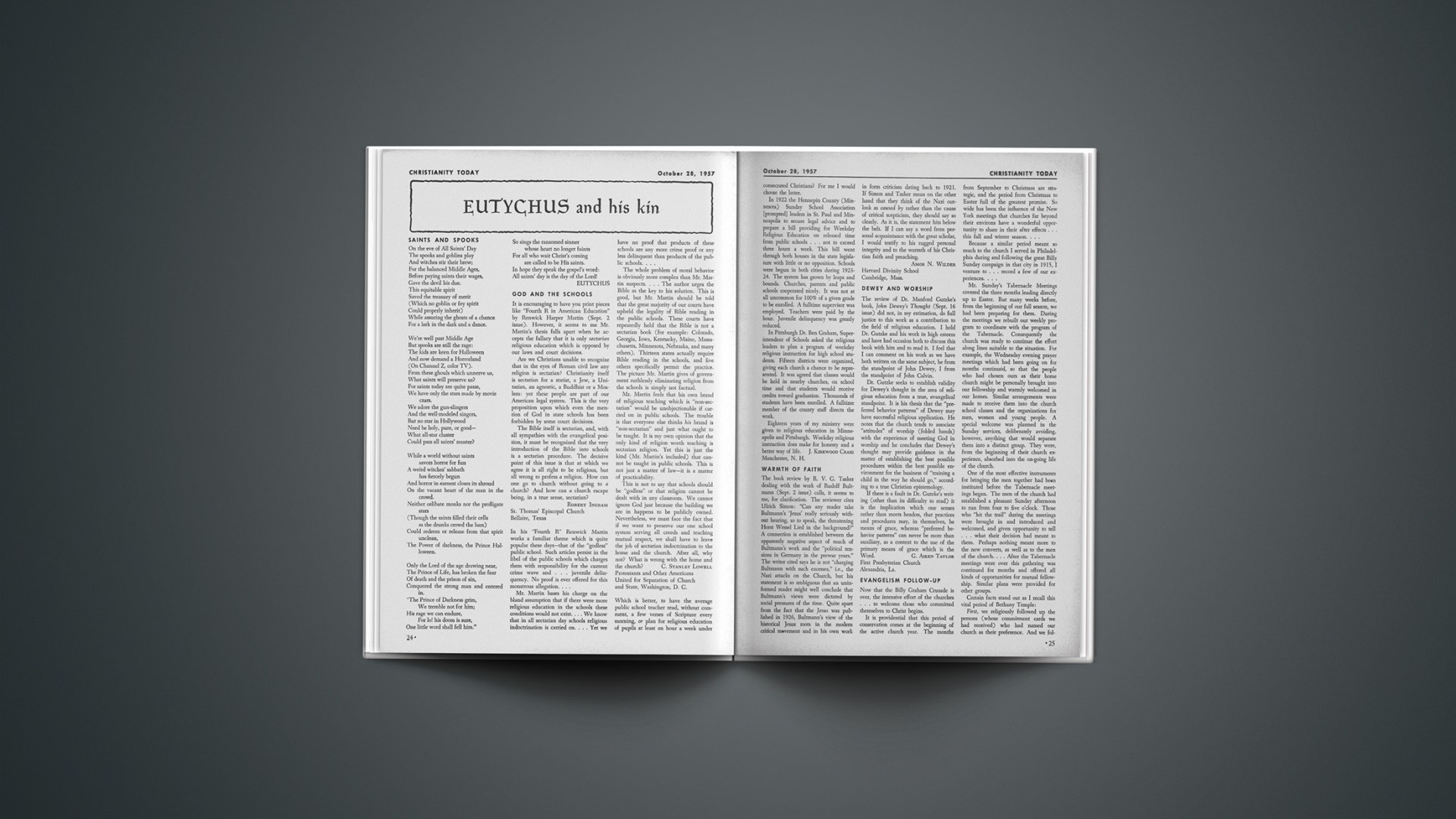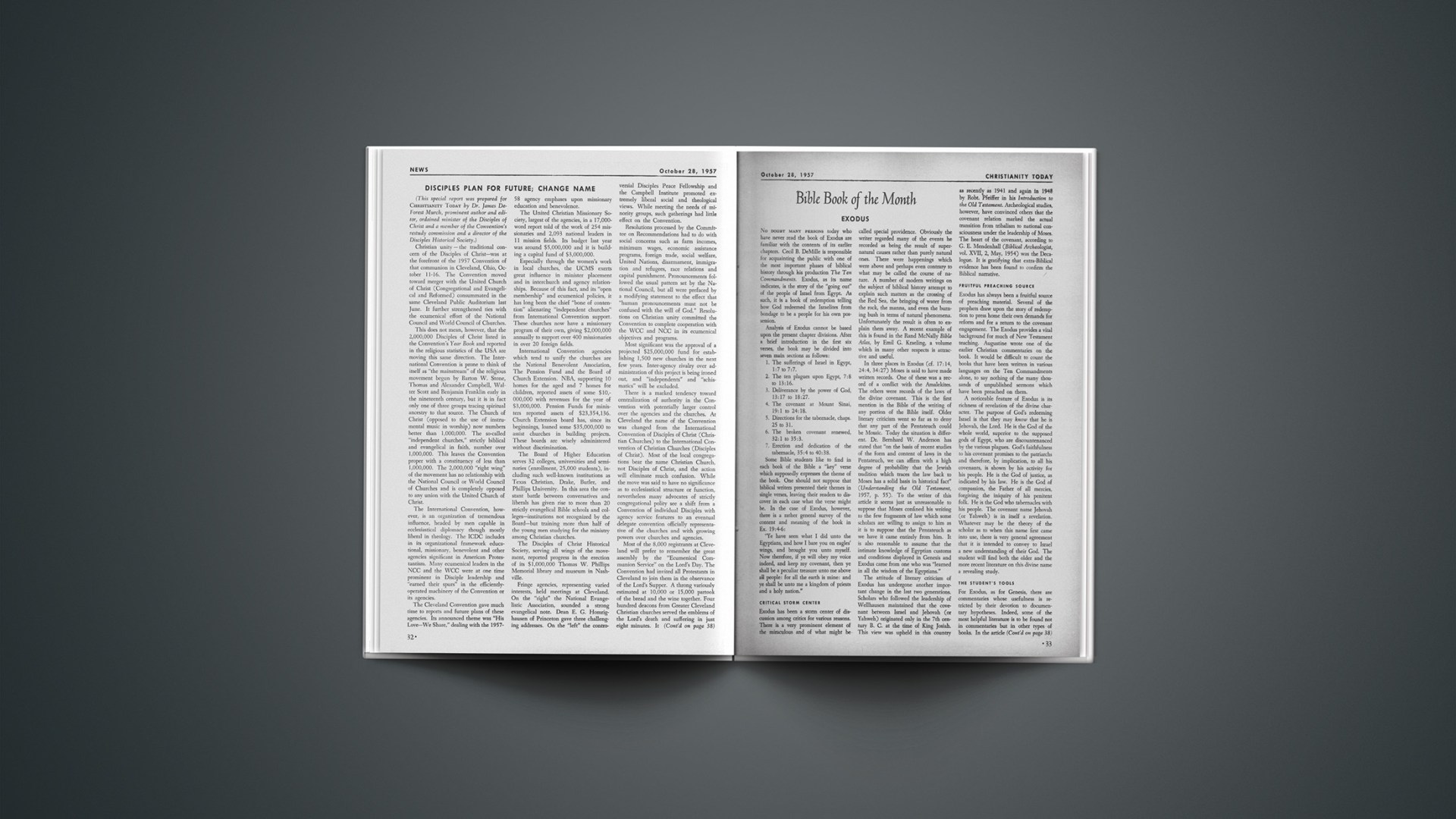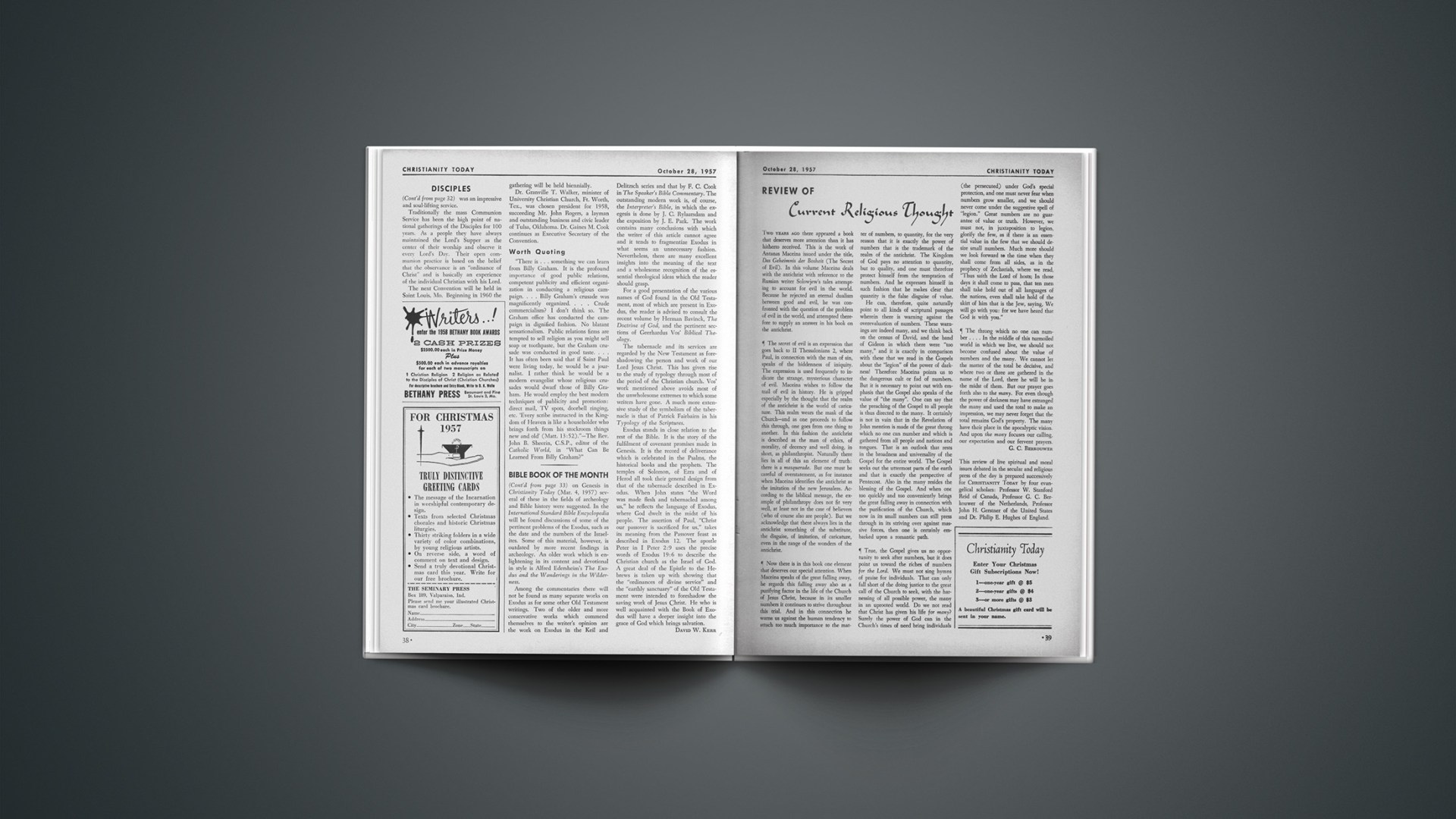Part I
[Part II will appear in the next issue]
The last few months have witnessed a rash of denials by the Roman Catholic press that Protestants have been persecuted in Colombia during the last eight years. Outstanding dignitaries of the American hierarchy have simultaneously made trips to Latin America, returning with the same story, regardless of whether they stayed in Bogota six short days or traveled around the country. These developments have not only confused many Catholics (who wonder about so much denial of something that “never happened”) but also arouse many questions in the minds of Protestants. Notable articles are now appearing (cf. Time, September 23, 1957, and Presbyterian Life, September 21, 1957) to interpret the situation.
Here in brief is what has happened. In May of this year the military forces of Colombia overthrew the military dictator Rojas Pinilla and drove him from the country. This action by the military junta had the approval of the Roman Catholic hierarchy, despite the fact that a few months prior Rojas Pinilla still had the complete backing of the hierarchy. As soon as this new military junta took control of Colombia, it initiated a more normal and constitutional state of affairs. Simultaneously, articles began to appear with greater frequency in the Roman Catholic press in America denying religious persecution in Colombia.
Roman Catholic View
The first widely publicized article was printed in View Magazine of the Capuchin Fathers in New York in June. This in turn was reprinted in the press throughout Latin America, in the English Catholic press, and in La Prensa (Spanish daily printed in New York), apparently as the hierarchy’s official denial of charges of Roman Catholic persecution of Colombian Protestants:
For the last ten years there have been published all over the world news of religious persecution in Colombia. The Protestants are always the presumed victims, and the Catholics are always the presumed persecutors.… The dynamo of this prolific anti-Catholic propaganda is the Evangelical Confederation of Colombia, known by the abbreviation CEDEC in Spanish, which comprises 17 of the 27 Protestant groups in Colombia and represents about 12,000 of the 27,000 Protestants that there are there. The Anglicans, Episcopalians, Lutherans and Baptists have refused to join this so-called “Common Front” against Catholicism. The Baptists have stigmatized it as hypocritical and absolutely opposed to Protestant liberty.
In no case has the CEDEC demonstrated conclusively that the violence it said the Protestants have suffered was ever more than a local brawl between Evangelicals and Catholics, provoked by an offensive and at times violent proselytism. The demonstration that CEDEC would be unable to prove juridically its accusations is evident in the silence of the United Nations and in the indifference of our own Department of State.… Nevertheless, a sensationalist press will publish practically anything that can stir up agitation.
Analysis Of Charges
Let us look at some of these charges. The first charge is against the Evangelical Confederation of Colombia, which includes all but a few Protestant missionary agencies in Colombia. The Episcopalians in Colombia have no mission in the usual sense; they operate three or four chapels and practically all in attendance are foreigners. Lutherans and Baptists are not in CEDEC. But this refusal is due wholly to the fact that Baptists and Lutherans do not sign statements of faith, which membership in this organization requires. The Colombian Lutheran Mission states:
On several occasions we have availed ourselves of the services of the CEDEC legal office and have contributed regularly to the maintenance of the same in our common fight for religious freedom in Colombia.
As to the CEDEC news releases I am not aware that Lutherans in Colombia (or other informed persons treating impartially the facts of religious persecution in Colombia) have questioned the veracity and uprightness of the CEDEC News Service. I have seen no attempt to exaggerate. While it would be folly for anyone to claim infallibility in the accumulation and presentation of facts, it is my opinion that the CEDEC has on the whole succeeded in being consistently exact in reporting incidents of religious persecution in Colombia.
The article also says that Baptists have not only refused to join but they have stigmatized CEDEC. Officially Baptists have replied:
Baptists, though not actively participating in the CEDEC movement are in sympathy with its efforts to state clearly the Evangelical cause in Colombia.
Baptists do hereby reject the false charges as presented by the View magazine that “The Baptists have stigmatized it (CEDEC) as hypocritical and absolutely opposed to Protestant liberty.” Never has such a statement received our endorsement in Colombia, therefore, we must emphatically reject such a malicious attempt to misrepresent both Baptists and the CEDEC organization.
Colombian Baptists affirm that persecution of Evangelical groups under instigation of local Roman Catholic priests has for years caused much suffering and therefore we continue to register our protest against such persecution campaigns.
Of the 18 Protestant missionary societies of any importance in Colombia, 14 are members of CEDEC and three others cooperate. Of the 60,000 Protestants in Colombia, at least 90% are represented by CEDEC.
This View article then goes on to dismiss persecution as nothing but a local brawl between Evangelicals and Catholics. CEDEC has actually documented over 700 cases of violence where Protestants suffered. Our NAE Washington office also has complete reports on hundreds of these cases. It is true that these were all local affairs. There was no coordinated effort across Colombia in one day or one month to wipe out Protestants. But during this period 49 Protestant churches were totally or partially destroyed, 34 others confiscated (many of these are now serving as schools, offices of mayors, police and military barracks and have not been returned to Protestants). In an overwhelming number of cases mobs and attacks were either personally or indirectly led by local Roman Catholic priests.
What Is Persecution?
This brings us to ask, “What is persecution?” In the summer of 1956 while in Colombia, we were informed by Father Ospina of Javariana University, official mouthpiece of the hierarchy there, that persecution does not exist in Colombia—although he acknowledged religious violence, churches burned, people killed and that many had suffered. But, he said, “there can be no persecution unless the Church orders persecution.” Therefore, all that has gone on is not recognized as persecution. We prefer to use Webster’s definition that “to cause to suffer because of religious belief” is persecution. That’s exactly what has gone on in Colombia for nine years, with scores suffering death.
The article in View then asserts that CEDEC cannot prove these accusations in view of the silence of the United Nations. But this matter is not within the jurisdiction of the U.N. There would be no way to get these facts before the U.N. unless it were made a national matter and the delegates of the United States were to bring it up. View refers to the indifference of our own State Department. But the present Assistant Secretary of State for Inter-American Affairs, in a letter dated May 31, 1957 (at the very time the View article was printed), says:
As you know, we are extremely concerned with the problems confronting United States Protestants in Colombia, and we desire to do everything appropriate to find satisfactory solutions.
The State Department has in fact shown tremendous interest and has done everything within its purview to alleviate the religious problems and difficulties confronting Americans there. It has complete files, and knows that government personnel has also been involved. When the priest-led mob attacked the First Baptist Church in Bogota on December 22, 1951, the U. S. Ambassador, standing in the door of the church during the dedication service, was struck in the head with a piece of brick.
Memorandum To Senators
Before the recent change in Colombian government, the situation was so serious that the National Association of Evangelicals sent an individual memorandum in January, 1957, to members of the U. S. Senate. We received no contradiction of the facts in this document, and can guarantee their factuality:
On October 17, 1956, the Colombian Army entered south western Tolima to wipe out so-called guerrillas, (armed liberals, mostly all Catholics, many of whom have been marked for assassination). Reports indicate not one guerrilla was killed or captured, but several thousand Colombians, including the large Protestant congregation in Campo Hermoso, lost everything they owned and fled as refugees to the mountains. The army adopted the “scorched earth” policy, and ruined the homes and farms of these people.
On October 13, 1956 Luis Arce, lay preacher of Buenavista, Caldas was murdered while working on his farm by several “police” because he was an active evangelical leader. His brother and a hired man were also killed because they were sympathizers with the evangelical views.
On September 29, 1956 Sr. Ramon Garcia, elder of the Presbyterian Church in Coloradas, near Cartago, Valle, was assassinated on a mountain trail between Los Coloradas and Cartago. Another evangelical, Sr. Gutierrez, was returning from the funeral of Sr. Garcia when a group of fanatics attacked and severely wounded him. Some 25 families of the Presbyterian Church had to abandon their homes and flee the area for fear of further violence.
Two American missionaries, Miss Ida Danielson (a veteran missionary 82 years old) and Miss Dorothy Hagerman were arrested in Quinchia, Caldas, July 15, 1956 and were charged with having Communist literature in their possession. The literature had been carried into their home by the same police officers who made the arrest. After being held in house arrest for two days, their case was turned over to the Colombian Secret Intelligence Service in Manizales. The ladies were arraigned before the Military Penal Court and had to spend two nights in the police barracks. After several weeks of harassment they were finally cleared by the Colombian government through the (active) intervention of the U. S. Embassy.
On July 9, 1956 at 2 a.m. an effort was made to burn four American missionaries alive in La Cumbre, Valle. Arsonists fired their house with gasoline. Several witnesses in sworn testimony named Father Millan as the instigator who planned the attack and hired four men to do it, with police cooperation. Perhaps the most serious of all is that more than 40 Protestant churches were closed by the Colombian government during 1956. This does not include any of the 49 churches which have been destroyed since 1948. The Colombian government based its action on an agreement with the Vatican which was concluded in 1953 and which gave the Catholic Church exclusive religious and educational rights in approximately 3/5 of the country. This agreement has been given precedence over a long standing treaty between Colombia and the United States which has been in force since 1846, with regard to their citizens and their right to live, move and practice their religion anywhere in either country.
In a subsequent memorandum issued August 28, 1957 we added:
On April 3, 1957, armed men, apparently belonging to the army, violated the Presbyterian chapel in Galilea, Tolima Department. They broke open the doors to the chapel and adjoining manse and that night slept in the two buildings. On leaving the next day they destroyed furnishings of the chapel, including cups and plates for serving Holy Communion, chairs, pews and tables. They burned hymn books and Bibles and broke a hole in the roof of the manse. Damages are estimated at 500 pesos. In 1952, the congregation experienced violence as follows: A short distance from the chapel the aggressors met Sr. Jose Noel Luna, a Ruling Elder of the congregation. They questioned him about his religious faith, and when he affirmed that he was a Protestant they stabbed him in the chest and left him in the road. Sr. Luna was able to crawl to a nearby house, where he died that same day (May 29, 1952).
On March 2, 1957, Protestants of San Carlos (Cordoba Department) were assembled in a service of Divine Worship under the direction of Sr. Jose C. Ayala, when they were interrupted by a Roman Catholic priest. The priest entered the service while the Protestants were praying, and in a loud voice questioned their right to assemble. The priest withdrew and sent in a policeman who stopped the meeting and ordered Sr. Ayala to accompany him to the police station. There he was directed to stop conducting Protestant religious services and threatened with arrest if he should be apprehended again. Sr. Jose Ayala is licensed by the Presbyterian Church in Colombia to preach the Gospel.
Two United States citizens were arrested in Ayapel, Colombia on June 4, 1957, and were charged with “being found in Catholic mission territory without authorization from the local priest.” Dennis Crespo, a missionary of the Latin America Mission in Colombia, and Fred Roberts, of Westminster Films, Pasadena, California, were traveling through Ayapel in the interests of a documentary film on the work of the mission. They stopped for the night in the home of Florencia viuda de Acevedo, an evangelical, when they were surprised by the appearance of Father Juan Valentin Cidres. The priest was accompanied by two national policemen armed with rifles. Father Valentin ordered the men to leave all their baggage in the house and they were conducted at gun point through the streets to the police station in the town of Ayapel. Arriving at the jail, the priest ordered the police to lock up the prisoners overnight and to fine them each fifty pesos (about eight dollars). “Your very presence is a form of Protestant propaganda,” he told them.
Early in May, 1957, at Victoria, Caldas, Colombia, a governing elder of the congregation was administering the Lord’s supper when the priest entered, knocked the wine out of his hand and insulted the group. Then the authorities arrived to help the priest and took the evangelicals to a school, where they were locked up. When they were set free after sunset a mob of fanatics was waiting, armed with clubs. Although beaten and bruised, they all managed to escape. Later the mob caught the 24-year-old Belarmina Tabares Alvarez, and obeying the priest’s orders “not to leave one Protestant alive,” they murdered her. Her broken body was found later in the waters of the Tasajo River.
March 31, 1957, evangelicals at La Cumbre, Colombia held a memorial service for missionaries John and Mary Dyck. While the service was going on, the loudspeaker on the Catholic church was blaring forth insults against the Protestants, with special reference to the memorial service. It was discovered that it was Father Millan, the local priest, who was broadcasting the anti-Protestant propaganda. As a result of his activity a mob was formed and plans were being made for action against the Protestants. Violence was averted only because one of the leaders, the city manager, was killed in an automobile accident and the mob was hurriedly dispersed. (The Dycks, Mennonite missionaries at Istmina, Choco, for the past eight years lost their lives in an airplane crash March 9.)
On March 9, 1957, the Inspector of Police of Bocachica, Cartagena (Bolivar Department), Sr. Policarpo Berrio, sealed the door of the house used for Protestant religious services and announced that the parish priest, Father Jose Cristin (an Italian), had ordered all Protestant meetings prohibited. Father Cristin and the Inspector announced that this measure was taken because the children of the Protestant families were attending Sunday school where they were learning doctrines contrary to the Roman Catholic religion. Thus, declared the priest, the children were being taught to oppose the government of Colombia.
Clyde W. Taylor directs the Office of Public Affairs of the National Association of Evangelicals and is the movement’s official spokesman to representatives of U. S. and foreign government in Washington, D. C. His office is best known for its worldwide crusade for religious freedom.
Legacy
Olympus fades, the Greeks and Romans
Are thundering no more.
Valkyries bring no heroes home
To grace Valhalla’s door.
Great Babylon, Tyre and Carthage
Lie in ancient dust
With many warriors and captains
Beneath earth’s aging crust.
The heart of man, the world’s warm altar,
Still glows and will arise
To worship God, Eternal Love,
In His own Paradise.
MARY LUCRETIA BARKER



